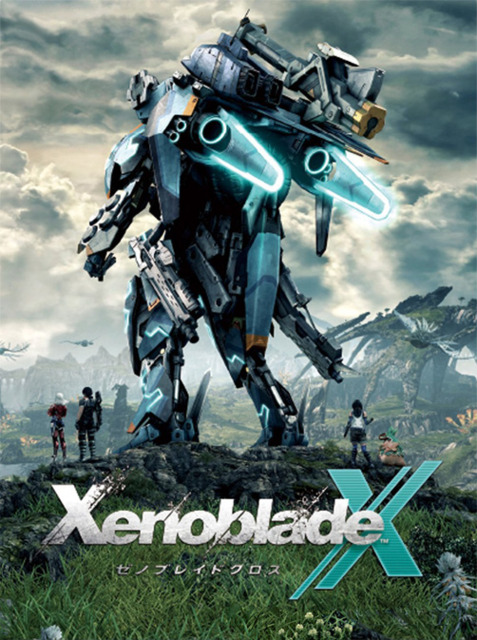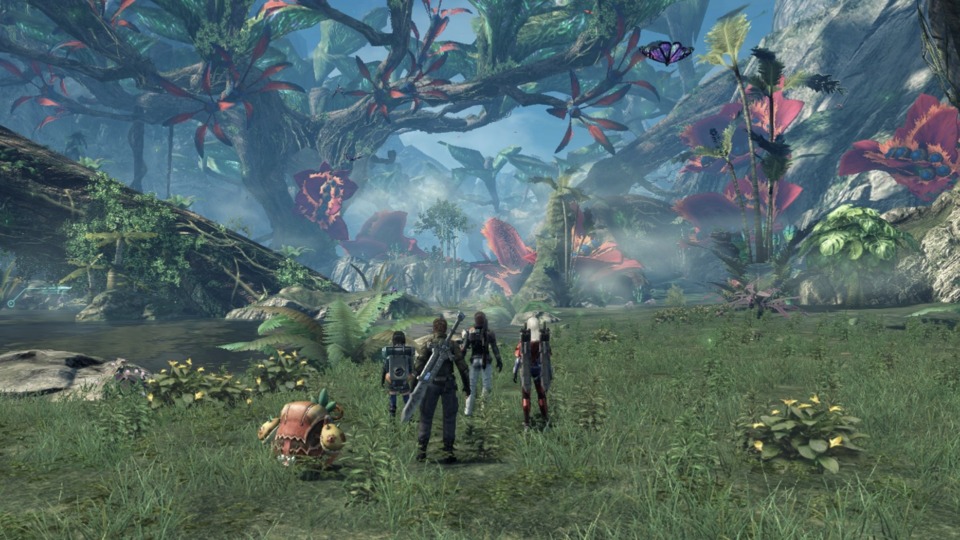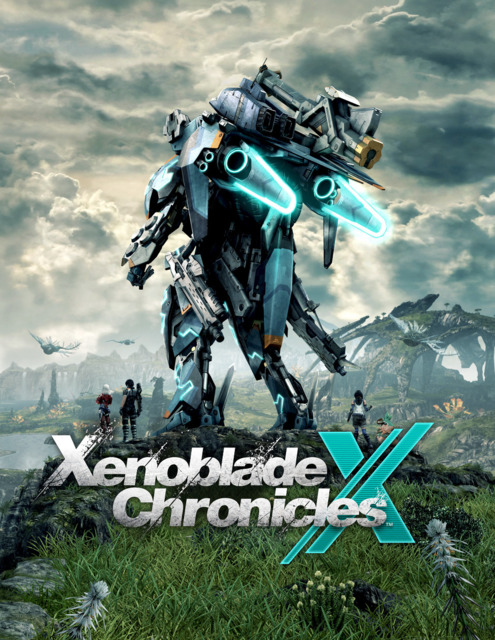Another week of content, another Saturday on which to summarize it. I've been thinking about anti-achievements of late, after completing Flywrench a week or so ago. Those are the achievements that reward bad play, like failure to complete a level so many times or dying a set amount. I think developers throw them in there to suggest that not all that glitters is gold as far as full achievement sets go, but the majority of achievement hunters grab them regardless, and will even go out of their way to suicide enough times if it's the only achievement(s) left. I'm sort of ambivalent about them myself. You could argue that they're a way for the developers to be passive-aggressive towards lousy players, or conversely a means of encouraging those who are flagging a bit with a freebie achievement. Either way, with full sets being the ideal target, I don't see them as working as intended. I did briefly consider what it would be like to have an anti-achievement system that was more literally so, in that these achievements would actually dock points, but I can imagine the amount of furor that would cause. Achievements continue to be a weird, but now mostly indelible (outside of Nintendo platforms anyway), inclusion to modern games.
Anyway, the week in review:
- We've now seen the second batch of games to go through The Top Shelf's meat grinder, bringing us another quintet of not particularly sterling near-launch content. I have shown a little generosity, however, by placing one of this week's game into the "Considered" category: a group of games that will move onto a second round of eliminations once I've processed the entire library. Check that out, and know that this upcoming week's batch will be an improvement over the last two.
- Though it was dreadfully short, the chill Indie platformer Refunct was our positively-rated Indie Game of the Week this time around. In my head, I pictured that feature to be around 500-1000 words per article with the potential to go over that if its subject matter was particularly remarkable. Safe to say I barely scratched the minimum of that target range this time. Sometimes there's merit in simplicity, but not when I'm trying to scrutinize a game without repeating "blocks", "jumping" and "switches" far too many times apiece. A game worth checking out, is the even shorter version of that review.
Xenoblade Chronicles X

I don't even know where to start describing Xenoblade Chronicles X. Like its predecessor Xenoblade Chronicles, it's an open-world sci-fi RPG that has perhaps way too much stuff in it. That's not just in the sense that its world is large and fairly samey - there's a lot of repeating monsters and geography in each individual zone, but the zones themselves are very distinct and wonderfully alien - but that the game is packed to the gills with systems and features and mechanics that it's often hard to keep track of them all. I wrote a list of what I loved about the first Xenoblade Chronicles many years ago, and I feel like that's going to be the optimal way to describe everything I love about its sequel (or I guess gaiden game, since we're getting a Xenoblade 2 now) and the sheer volume of game design goodness it has packed into it. I might just do that for this update and save my reservations and story analysis for a future Saturday: this is definitely not a game that I'll be finished with any time soon. (I haven't even unlocked skells yet - the game's name for the exoskeleton walking armors which are integral for fighting larger monsters. Apparently that's more of a mid-game thing.)
- First, the basics and what I would consider essential to an open-world RPG like this: You can save anywhere. You can fast travel to anywhere from anywhere. You can instantaneously move time forward at specific areas, but most of those areas can be instantly warped to so it's no big deal. Death results in bumping you back to the nearest warp point or landmark no harm done, and the only "progress" lost is from the fight itself. Depending on the size of the monster, though, that might mean crashing and burning ten minutes into a particularly protracted battle. (Nothing like Final Fantasy XII's Yiazmat yet, though I've seen creatures that dwarf the infamously durable dragon.)
- The game's progress is structured in such a way that every active hexagon of every map has a quest attached to it. Sometimes they're as insignificant as killing a single boss creature (the game calls them "tyrants", which works for me) within that hex, or a longer multi-stage mission that might involve building affinity with one of the game's many secondary characters or one of the story-significant main quests. At any rate, after completing these quests the hexagons are given a golden "completion" shield. Some of these areas are made up of many, many hexagons, and it's kind of a neat take on a territory takeover mechanic.
- As well as color-coding monsters based on their relative difficulty, something FFXII and the original Xenoblade did (as well as probably a buttload of MMOs), the map hexagons themselves are colored that way too. Most monsters - the game calls them "indigens", which is a really sci-fi way of describing native wildlife - aren't actually hostile. Others will only turn hostile based on proximity or line of sight. The difficulty of a particular hexagon hinges on the level of these potentially hostile creatures within the hex, and is colored appropriately from white and purple as the weakest to yellow and red as the toughest. The idea is that you can check the map of any given zone and pick a route that avoids the higher level areas, because those beasties will just stomp you dead if they spot you. It's a neat way of making every region both tenable for exploration at whatever level you happen to be at, if you just want to run around exploring, while retaining their potential for high-level encounters further down the road when you're better equipped to handle them.
- The standing goal for most of the game is to set "FrontierNav" probes. Probe locations tend to be spread around in a certain pattern, with most of them nestled within eight non-probe hexagons and being two spaces away from every other probe. It doesn't quite work out that way uniformly due to the uneven boundaries around each zone, but the goal is to reach the beam of light that indicates where to plant a probe, and then let it dig its way underground and grant you information about the surrounding landscape. You can also configure the probe to give you either mined materials or research revenue: the first can be spent upgrading the vendors for better gear, and the latter is spent at stores to buy said gear. You're encouraged to explore and plant probes for the sake of humanity's survival - getting forewarning for threats and understanding the lay of the land in this alien world is essential - but the game makes sure to have tangible and fungible rewards for performing this task as well. It's a rough equivalent to buying up all the storefronts in the Assassin's Creed games for the hourly revenue, combined with climbing those towers to get a better sense of nearby activities to complete.
- The game's combat is mostly a tweak of Xenoblade Chronicles's. There's no more Monado or clairvoyance, but rather each character class is based around two weapon types - a ranged and a melee - and the player gains ranks in each class through extended use and can move onto any other one whenever they choose. As they go up ranks in these classes - which is independent from the player character's level, which provides the stat boosts and allows for better equipment - they earn new Arts and new Skills. Arts are powerful abilities the player can use in combat, and each one has a cooldown on it to prevent the player from spamming them. These Arts are attached to the weapons the player is using, rather than the class itself: if you switch to another class that uses the same weapons, the Arts follow you over. Otherwise, you have to start filling your hotbar with new Arts. Skills are passive boosts you can equip, and unlike Arts don't require that you're using the class or weapons that they were attached to: you have them forever once you've acquired them. The best part of this system? If you reach the end of a certain class tree - they're configured in a way that there's three basic classes which respectively split into two paths with two classes apiece - and then master that final class, you gain "mastery" over the weapon types. That means you can use those weapons, and thus their attached Arts, with any other class. The potential for customization then becomes enormous for those in the mid- to late-game, once they have a few weapon masteries under their belt.
- Xenoblade's out-there affinity system is back. It is once again represented in the micro - the player character's affinity with every other playable character, the raising of which unlocks all sorts of benefits - and the macro, where every random NPC the player meets can have a whole web of relationships with other NPCs. The latter doesn't add much from a purely mechanical perspective, but it does help make the game's world feel more alive and its population linked together in various ways that don't necessarily involve the player at all. Building a strong affinity with another playable character means taking on special affinity quests with them, usually the side-quests with the most attention given to their writing and construction, and at the end of which you learn some unique Arts that only that character has. These Arts are attached to specific weapons, like any other, but the player can use them whenever they have a class that uses that weapon (or has gained mastery over it). Some of these unique Arts seem very powerful indeed, so it clearly pays to make friends.
- Missions are broken up into "story" (needed to move the game's plot along), "normal" (these are just given to you by NPCs in the traditional side-quest style), "affinity" (these involve other playable characters, usually requiring you to put them into your active party, and are a bit more substantial than normal missions), and "basic". Basic missions are the game's hundreds of fetch and bounty missions, and can be procured from a large randomized list from a bulletin console. The player can have twenty of them going at once, and they have the convenient bonus of being instantly concluded once you reach the correct number of items or have killed the specific number of monsters requested. It's a streamlined way of handling the less-interesting fetch quests which tend to be the meat-and-potatoes of a player's income for the majority of the runtime in an RPG of this type.

I should probably cut it off here. I didn't even get into divisions, crafting, the supportive "soul voices" used in combat, the game's asynchronous online aspects (it's very Dragon's Dogma-like), the return of Collectopedia, the return of the day/night cycle music changes, the return of in-game achievements which grant actual bonuses, the flagrantly Monster Hunter way you can aim at and destroy the body parts of creatures for more spoils, how you have a selection of voices to choose from for your created character that actually tells you who all the voice actors are in a nice bit of acknowledgement, or really anything to do with why you're on an alien planet in a crashed colony seedship that has a half-built future city named New Los Angeles. The story's a bit on the wild side, so I hope to get deeper into that next time once I'm further into the game. Xenoblade Chronicles X will be taking over this spot of the All-New Saturday Summaries for some time to come, but fortunately I don't think I'll ever run out of aspects to talk about. It's just that expansive.

Log in to comment